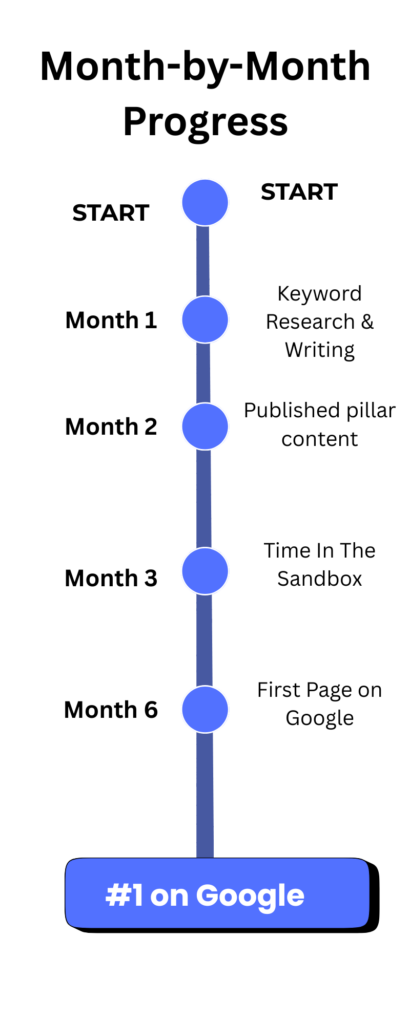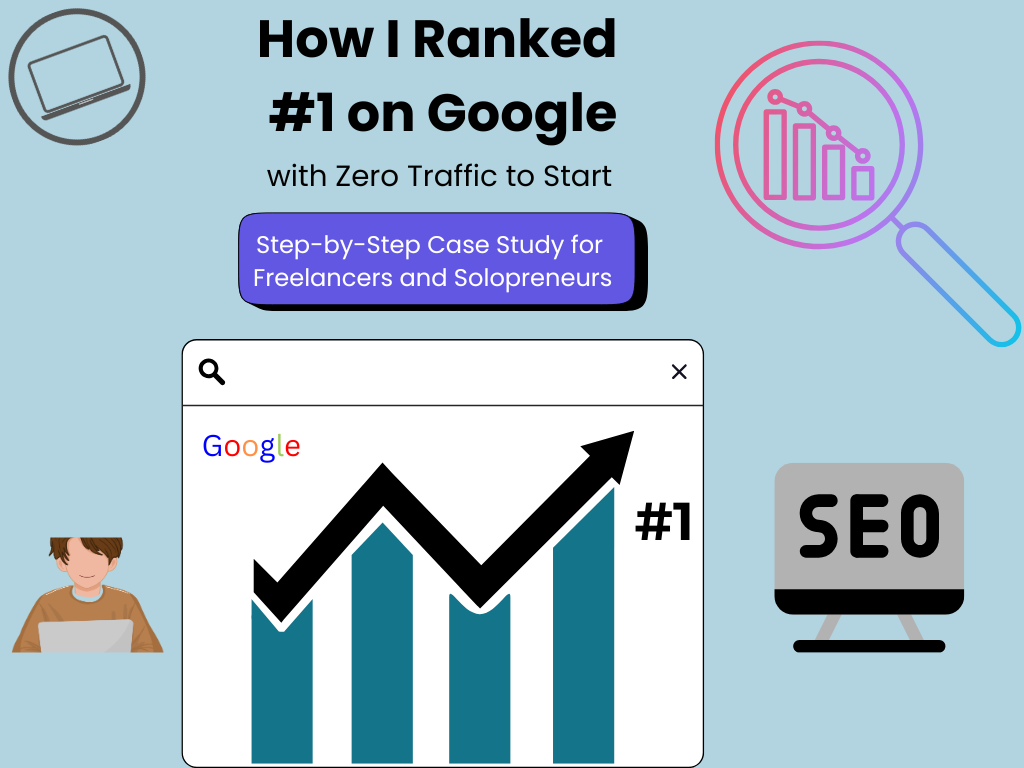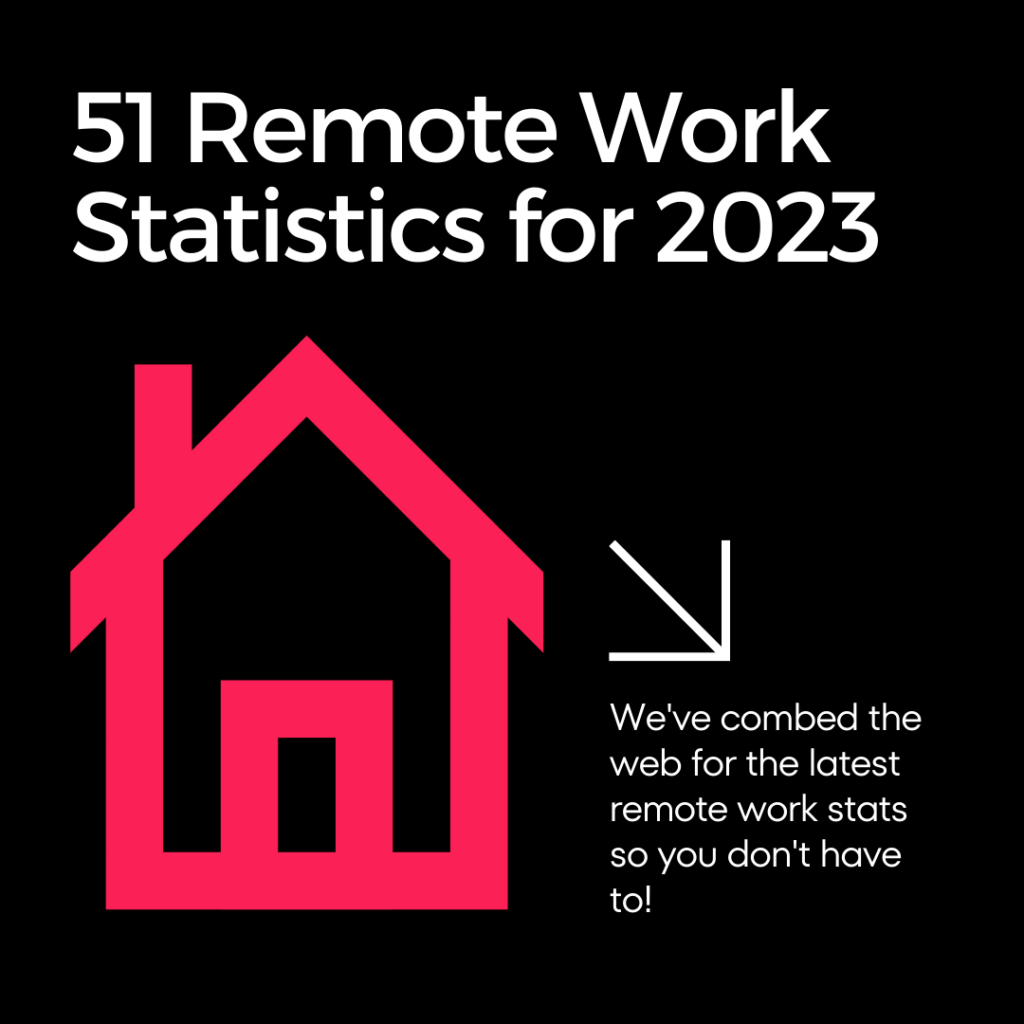How I Ranked #1 on Google for “Backyard Business”
Crickets. Nada. Nothing.
That’s what I heard after launching my new site Remoteofficeworld.com, despite my decade of freelancing experience.
But just a couple of months later, one of my blog posts hit #1 for the keyword ‘Backyard Business.’
In this case study I’m going to show you exactly how I ranked #1 on Google for “Backyard Business” and how you can replicate it, even if your blog’s brand new.
5 Key Steps I Took to Rank #1 on Google:
- Targeted keywords with low competition + high search intent
- Created long-form content that outperforms the competition
- Built a comprehensive piece of pillar content
- Added a strong internal linking structure
- Focused on SEO best practises
Let’s dive in to the nuts and bolts.
What Was My Goal?
I have a confession to make.
I’ve always wanted to work full time from my own backyard all summer long.
Hey, you have to have goals right?
The reason I started Remoteofficeworld.com, was because I had a sneaking suspicion there were a whole lot of people that had the same dream I have.
With 10 years of freelance writing under my belt, I was ready to try something different.
Instead of just writing freelance articles for clients, I was going to launch my own site, helping freelancers, solopreneurs, side hustlers and remote workers grow.
It’s amazing how much info you can soak up in 10 years without even realizing it!
My First Article Flopped
At first, I focused on the topic ‘how to convert a shed into a home office.’
I mean if you’re going to work in your backyard, you’re going to need a home office out there right?
That might be true, but what did I know as a freelance writer about converting a shed into a home office?
Trust me. I’m no handyman!
I wrote that article after a bit of competitive research.
I was confident I could write something better than anything on the first page.
How humbling when I couldn’t find my article anywhere on the first 3 pages of the Google SERPs, three weeks after I hit publish.
I had zero authority when it came to offering advice on a shed to home office conversion and it showed!
After watching more videos, reading a ton of articles and soaking up all the info I could find about what ranks on Google, I had a pretty good idea of where I was going wrong.
I wasn’t writing about a topic I was an authority in and my SEO approach needed an overhaul.
Why I Chose The Keyword “Backyard Business”
After that initial research binge, two things were clear — I needed to write about what I know and I needed to find a keyword within my niche with good traffic potential and low competition.
I’d already blown my budget on a domain name and hosting so I was looking for free tools to help me figure this out.
That’s where Google’s Keyword Planner came in.
I entered a combination of keywords around the subject of working from home, working in a garden shed, working in a sunroom, and so on.
Finally after a lot of trial and error I landed on the perfect keyword in my niche – ‘Backyard Business.’
Backyard Business — High Traffic Potential, Low Competition
It had a decent amount of monthly traffic and the competition was low.
It was now almost two months after my site launched and I was itching for a win to start seeing some traction.
The thing is, when you find the right topic the writing part is easy.
Building a Backyard Business was something I knew how to do.
In the warmer months I spend 90% of my writing time under my gazebo, with my fold up desk and a laptop, madly tapping away at the keys.
I realized my business was one of dozens, if not hundreds, you could launch from a backyard. Why not explore that idea further?
Choosing A Winning Format
Writing a listicle about the best Backyard Business ideas to launch at home seemed like a no brainer.
Listicles have been a staple in the Blogosphere for years. If it had worked for others, it could work for me.
I clearly understood the search intent of people searching for the term “Backyard Business” or “Backyard Business ideas”.
They wanted to work from home and they wanted to do it from their backyard.
The problem was, they weren’t sure what kind of business to launch.
What were their options? What kind of business could you launch out of your backyard shed?
I set out to build a list of ideas my future Backyard Business compatriots could use to find their own calling.
Facing the Giants: How I Beat the Big Sites

Guess what?
I wasn’t the first person to write a listicle targeting the keyword “Backyard Business,” not by a long shot.
So I had a couple of problems to overcome.
Problem #1 — Competing With High Authority Sites
There were far more authoritative sites than mine at the top of Google’s rankings, with tons of backlinks.
Some had been around for years!
How was I going to compete with that?
Well, as it turns out, the first couple of articles at the top of the SERPs may have been published on high authority sites, but the rest on the first page of results weren’t.
I figured I had a real shot at page 1 and once you’re on the first page you always have a chance of moving up right?
Problem #2 — Time
That brings me to problem #2.
What did the top 3 results on Google all have in common?
They were lists with at least 50 different business ideas.
This wasn’t going to be a short article.
It had to be epic in size and I had to provide better content than my competitors to get on page 1.
Challenge accepted!
I knew from my research on listicles, that listing an odd number of items tended to result in better performance. It grabbed the attention of potential readers.
If that’s what gets you noticed in the SERPs, the next question was how do you get them to click?
Simple.
I was going to build a list of Backyard Business ideas that was twice the size of my nearest competitor.
They put out a list of 50 ideas. I settled on 101.
Sounds easy, but it wasn’t.
For one thing, I tried to take a short cut with the first version of my published article.
I ignored the fact that my biggest competitors were creating lists with more than 50 Backyard Business ideas.
When I first hit publish on my Backyard Business listicle, it included only 15 business ideas.
It may have been well written, and richer in content value for each idea, but it was still a much smaller list than my competitors.
I now know it’s one of the major reasons my initial success was short lived.
There are no shortcuts to success.
You have to put in the effort and, most importantly, give your audience what they’re looking for. In this case more Backyard Business ideas!
The Highs and Lows of The SEO Rollercoaster
When I first published my masterpiece for the world to enjoy, bam! Instant success. I rolled into the top 3 on Google in the first week.
This was easy!
Boy was I wrong.
I didn’t know it then, but Google tends to try out new content, to see how it will perform against more established work.
My stay at the top of the SERPs was short lived.
As I feverishly started diving into more keyword research, article planning, writing and publishing, Google was getting ready to serve me a big surprise.
My big win turned into a big loss.
When I checked on the rankings for ‘Backyard Business a week later, my post was nowhere to be found.
I had no authority and I’d tried to take a shortcut to the top of the search results.
That was a recipe for failure.
At least in the short term.
Time In Google’s Sandbox
The dreaded time in the sandbox is a mythical idea dreamed up by the SEO world based on expert observation of how new websites perform.
These experts believe that the Google algorithm prevents new sites from ranking due to lack of domain authority, backlinks, and quality content.
By quality content here, I’m talking about at least 10 articles or more (More than 50 is a better target to aim for).
That takes time to research, write and publish.
Not easy for a solopreneur like myself.
Over the next 5 to 6 months my site dropped off the map in the search engines while I spent my time in Google’s purgatory.
I didn’t give up.
I kept working on content and even added in some video and audio content to spruce things up.
As the weeks turned into months, I worked on tweaking my site, improving both on page and off page SEO.
My Ongoing Approach to Keyword Research & Strategy
As I waited for a magical revival of my early success, I started looking into how other new sites with quality content and an SEO based approach to writing had fared.
That’s how I discovered the concept of the sandbox.
Turns out I wasn’t alone, many, if not most, new site owners experienced the same thing I did.
So I dug in, and kept searching for related keywords in my niche to publish new content around, that was both helpful to my audience and had the potential to attract organic traffic.
Turning One Post into Pillar Content
I was confident that I could eventually reestablish my position on the first page of Google results for the term ‘Backyard Business.’
After a quick bit of soul searching, I settled on a strategy of turning my article titled Start Making Money Today: 101 Easy Backyard Business Ideas into Pillar content.
Essentially I created a bunch of related articles, all pointing back to that original article with internal links.
Oh yeah, and I expanded my original 15 Backyard Business ideas to 101.
Go big or stay home right!
The Power of Internal Linking
Next I worked on Internal linking.
It’s one of the major ranking factors that Google considers and I was determined to make it a major focus of my strategy.
I wrote articles on Woodworking business ideas, Christmas business ideas, AI business ideas and so on.
They were all designed to help my audience with ideas for their own personal business venture and to show Google that my site wasn’t just another flash in the pan.
I was in it for the long haul.
External Linking & Backlinks
My ongoing trips down the research rabbit hole while I continued to build my site lead me to continually improve my SEO strategy.
One thing I’ve never been convinced of though, was the idea of actively hunting for backlinks.
Don’t get me wrong, I know they can be a powerful signal to Google that your site has authority.
So please, by all means, if you’re enjoying this case study, link away (Shameless plug)!
I just don’t think chasing backlinks is a good use of your time.
Focus on creating quality content, optimizing both on page and off page SEO, stay consistent over time and your audience will grow organically.
You’ll gain fans and those fans will link to your site without you having to ask them to.
I concentrated on building my internal links and adding external links to sites that supported my articles.
Both great SEO tactics.
Technical SEO was Key
There are so many aspects to good SEO practises, it would take an entire book to cover them all, but here’s a quick breakdown of some of the key SEO techniques I focused on in all articles:
- Page load speed
- Building mobile friendly pages
- Keywords in the main title
- Keywords in H2’s and H3’s
- Keyword in the first 100 words of my articles
- Keyword in my URL’s
- Keyword in my Meta Description
- Alt tag descriptions including keyword for all images
- Short focused URL’s
- Full competitor analysis of the first page of Google’s result pages
- Sprinkling in LSI (Related) keywords where appropriate throughout articles
Content Strategy for Growth
I had 3 main goals for each piece of content I created as my site became more established:
- Creating comprehensive helpful content
- Building articles with a clear, easy to read structure
- Using best SEO practices to encourage organic growth
Signs of Life In The SERPs
After about 5 to 6 months of consistent efforts, my site started to show signs of life.
I was ranking in the top 50 of the SERPs for about 100 different keywords and my pillar content — Backyard Business was back on page 1!
There was definitely a sense of relief at this point.
I’m not going to sugar coat it.
I thought about giving up on the site during my time in the sandbox, but I held on and kept going.
Creating more content and continuing to improve the SEO of my site.
I learned a key lesson on this journey.
The difference between success and failure is consistency.
Success is incremental.
It’s the result of each small step you take along the journey.
Every time you think you’re witnessing an overnight success story, I can almost guarantee you that person spent years practising their craft before they achieved even a hint of success.
Results
My overnight success story took almost a year.
Sure I was back on page 1 after 6 months, but that wasn’t my goal.
I wanted to be in the top 3 for ‘Backyard Business’ on Google.
I tweaked my listicle some more.
I created a Youtube top ten video to include in my article.
I included an audio only version at the top of the article if my visitor wanted to listen to the article instead of reading it.
And I cleaned up the look of the list.
All of those efforts paid off.
I was giving my audience a piece of truly helpful content, that they could consume in 3 different ways depending on their preference.
The end result?
The #1 ranking on Google as seen in the image below!
Key Takeaways
So what did I really learn from my SEO adventure trying to reach the peak of the Google mountain?
Other than the obvious of course that it’s hard work?
Three big key takeaways spring immediately to mind:
- You must have a targeted keyword strategy
- The content must have depth and offer real value
- Technical SEO optimization of your articles is critical to success
Another big one is search intent.
Your content and the titles you choose have to match the search intent of the user, otherwise they’ll bounce quickly.
Chances are if a visitor bounces quickly because they’re frustrated with your failure to answer their search intent, they’ll never be back.
Even worse than that?
If this happens continually with the content you publish, Google will send your content to the far corners of the Web where no one will ever find you!
SEO is a Long Game — Be Patient
Another key thing i learned about SEO as a whole as I travelled along the Google rollercoaster is that SEO is a long game.
Success rarely happens overnight.
You’re going to spend time in the Google Sandbox. It’s part of the process. Keep going.
Be patient.
What’s Next?
If there’s one overarching lesson that this whole exercise has taught me it’s this — don’t rest on your success.
The search engine algorithms can take your #1 ranking away in a flash.
If you want to maintain your success at the top of the SERPs you have to continually revisit your content. Update it with the latest information available at least once a year.
That’s my goal.
I’m also going to create more related content internally linking back to that pillar content that continues to build its authority over time.
Above all, I’m going to keep focusing on creating content that’s helpful to my audience.
Final Thoughts On How I Ranked #1 On Google for Backyard Business
If you take one thing away from this case study it should be this.
SEO is much easier than it sounds.
Sure I did a lot of work to get that Backyard Business article to #1, but that’s because I was learning the ropes.
Now that I know how it works, I create articles that are both helpful to the reader and Google friendly without giving it too much extra thought.
Take the time to soak up all the SEO and helpful content info you can find and apply it in your posts, write content that’s more helpful than the competition and periodically update your content.
Do all of that and you’ll find your content sitting at the top of Google’s SERPs in no time!
Want to see the post that ranked #1?
Check out Start Making Money Today: 101 Backyard Business Ideas.
For more SEO tips and freelancing insights tune into my weekly podcast – The Freelance Insider Show.
And follow me on X for even more behind-the-scenes content and quick tips: @almac1972. Feel free to Drop me a line at [email protected] as well, I’d love to hear from you.


